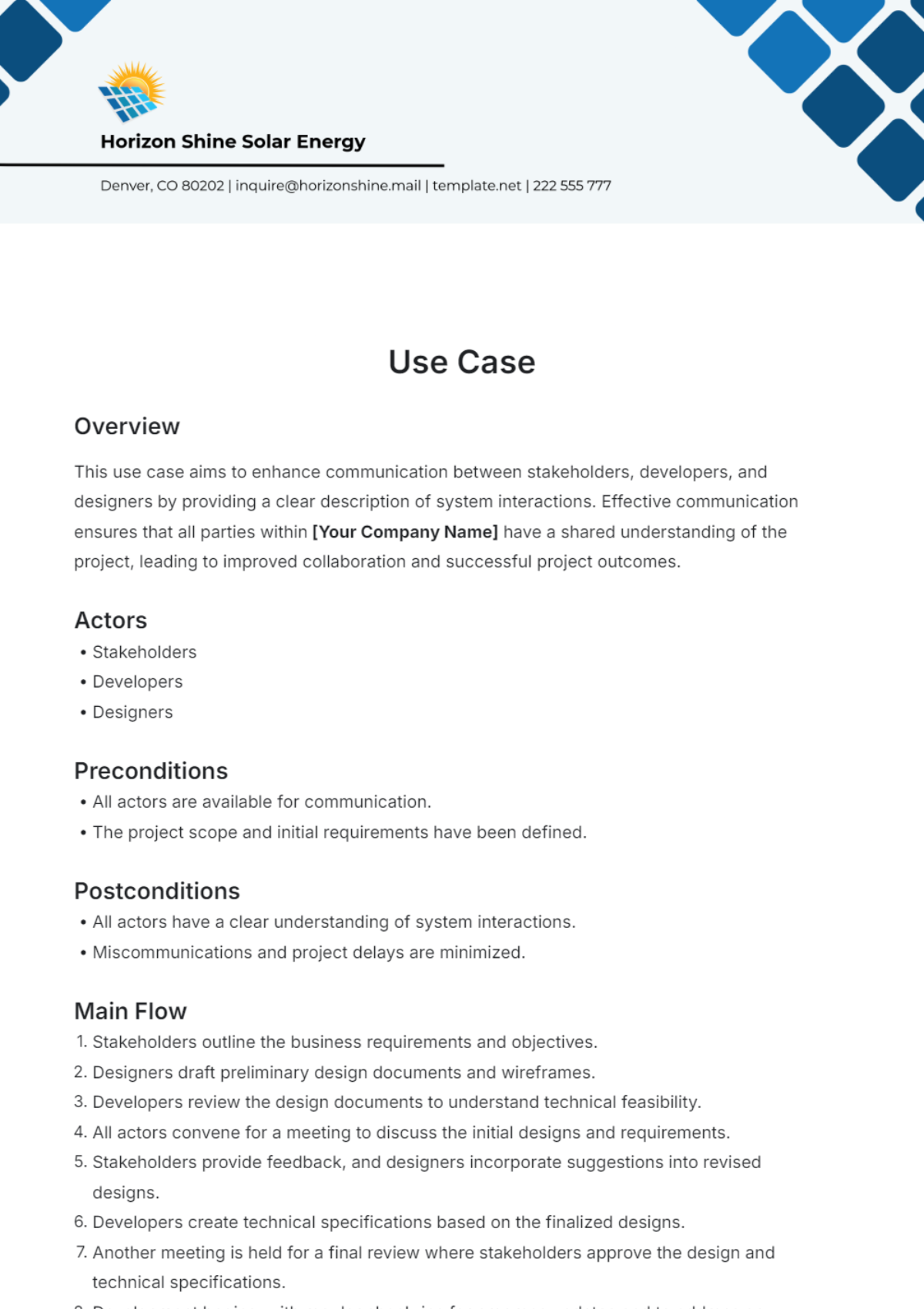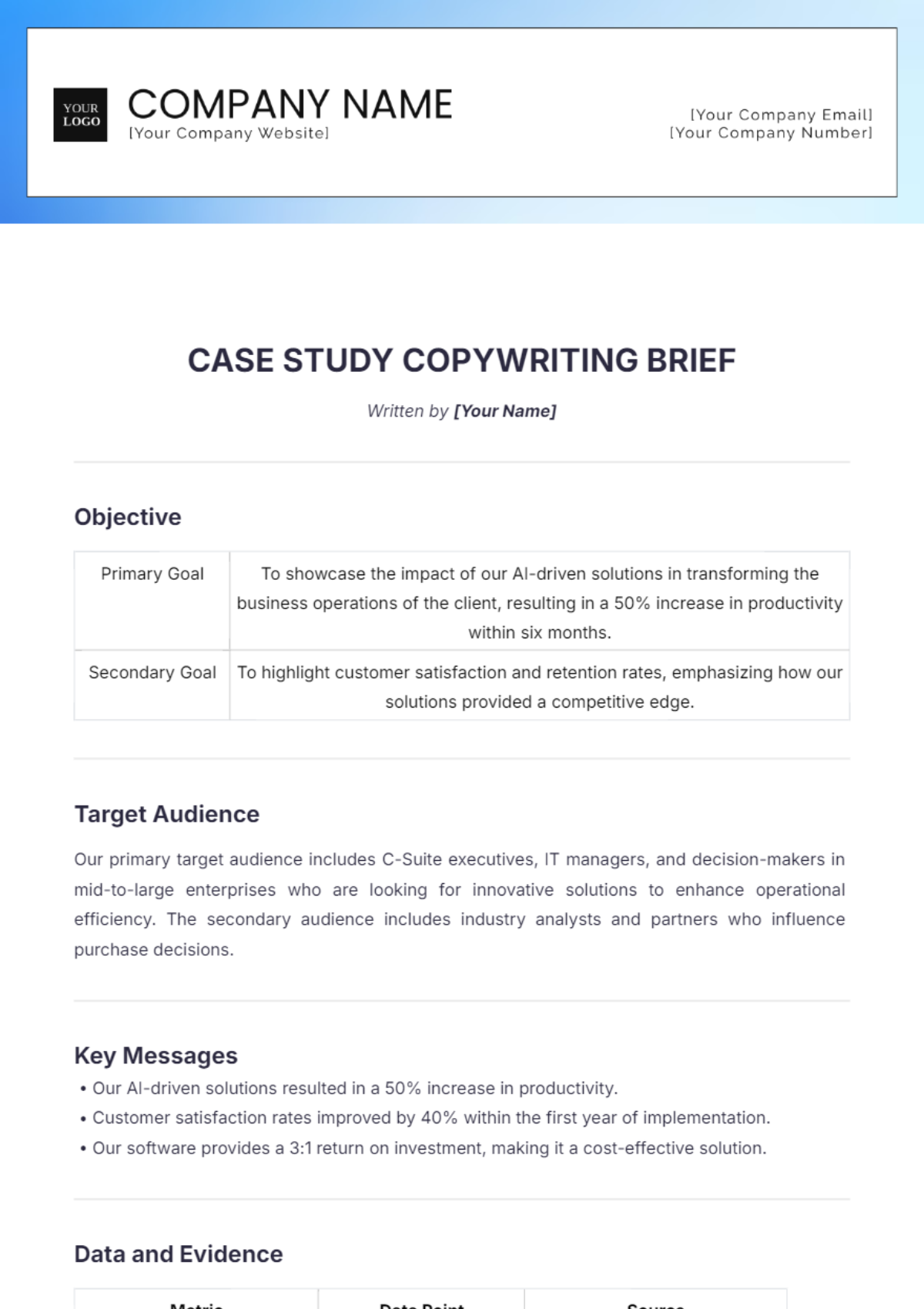Agile Project Case Study
I. Project Overview
Project Title: Digital Transformation Initiative at [Your Company Name]
Project Duration: [Project Duration]
Key Stakeholders: [List Stakeholders Involved]
Project Background:
[Your Company Name], a leading software development firm, embarked on a digital transformation journey to streamline operations, enhance customer experiences, and improve product delivery processes.
II. Objectives
2.1 Primary Objectives
Implement Agile Practices: Standardize Agile (Scrum/Kanban) across departments for collaboration and iterative development.
Reduce Time-to-Market: Streamline processes, shorten sprints, and integrate continuously for 30% faster software releases.
Improve Customer Satisfaction: Prioritize feedback, iterate based on needs, and ensure timely delivery for 20% higher satisfaction.
2.2 Success Criteria
Decrease Project Cycle Times: Measure efficiency, and track time from start to finish for quicker delivery.
Increase Customer Feedback Ratings: Actively incorporate feedback during Agile cycles for improved satisfaction and loyalty.
Successful Agile Adoption: Ensure uniform Agile implementation, collaboration, tool utilization, and measurable improvements.
III. Methodology
3.1 Agile Framework
Scrum is a framework within Agile methodologies emphasizing iterative development, frequent inspection, and adaptation. It prioritizes collaboration, transparency, and delivering value to customers in short cycles called sprints.
3.2 Key Practices
Daily Stand-up Meetings: Brief daily meetings to align team members, discuss progress, and plan work for the day. It fosters communication, identifies blockers, and maintains focus on sprint goals.
Sprint Planning and Review: Sprint planning involves defining tasks for the upcoming sprint, while sprint review evaluates completed work and gathers feedback from stakeholders. These practices ensure alignment with goals and continuous improvement.
Retrospectives for Continuous Improvement: Retrospectives occur at the end of each sprint to reflect on what went well, and what didn’t, and identify areas for improvement. It encourages team collaboration, learning, and adapting processes for better outcomes.
3.3 Tools Used
Jira for Task Tracking: Jira is used to create and track tasks, manage workflows, and monitor progress during sprints. It provides visibility into team activities and helps manage project backlogs efficiently.
Confluence for Collaboration: Confluence is a collaborative platform for sharing project documentation, meeting notes, and other team information. It facilitates knowledge sharing, documentation, and streamlined communication among team members.
3.4 Roles and Responsibilities
Product Owner: The Product Owner represents the stakeholders and ensures the development team delivers value-aligned products. They prioritize tasks, define requirements, and make product decisions.
Scrum Master: The Scrum Master coaches the team on Agile practices, removes impediments, and facilitates smooth sprint execution. They promote self-organization, continuous improvement, and adherence to Scrum principles.
Development Team: The development team comprises individuals with diverse skills (developers, QA testers, designers) collaborating to deliver sprint goals. They self-organize, collaborate closely, and own the delivery of incrementally valuable work.
IV. Challenges Faced
Resistance to Change: Teams resist Agile due to unfamiliarity or fear. Overcoming this needs communication, training, and showcasing Agile benefits.
Aligning Priorities: Difficulty aligning goals during Agile transition. Clear communication and stakeholder involvement help resolve conflicts.
Legacy System Integration: Integrating Agile with legacy systems poses technical challenges. Incremental upgrades and collaborative problem-solving ease integration hurdles.
V. Solutions Implemented
Agile Training Sessions: Conducted training sessions to familiarize teams with Agile concepts and practices, promoting adoption and understanding.
Clear Sprint Goals: Established transparent sprint goals and backlog prioritization methods to focus teams on delivering valuable increments efficiently.
Automated Testing for Legacy Systems: Implemented automated testing processes to streamline integration with legacy systems, reducing manual effort and ensuring reliability.
VI. Results Achieved
Reduced Time-to-Market: Achieved a 25% reduction in time-to-market for software releases, improving competitiveness and customer responsiveness.
Increased Customer Satisfaction: Boosted customer satisfaction ratings by 15% within six months, indicating improved product quality and alignment with customer needs.
Improved Collaboration: Enhanced team collaboration and communication, leading to faster decision-making and more effective project delivery.
VII. Lessons Learned
Executive Buy-In: Highlighted the importance of leadership support and involvement in driving successful Agile transformations across the organization.
Regular Retrospectives: Emphasized the value of ongoing retrospectives for identifying and addressing process bottlenecks, fostering continuous improvement.
Flexibility and Adaptation: Recognized the need for agility in responding to market changes, customer feedback, and evolving business needs within Agile environments.
VIII. Future Recommendations
Expand Agile Practices: Extend Agile practices to non-development departments for holistic organizational agility and improved cross-functional collaboration.
Advanced Agile Training: Invest in advanced Agile training programs to enhance team skills, knowledge, and capabilities, driving higher efficiency and innovation.
Continuous Process Monitoring: Implement regular feedback loops and monitoring mechanisms to continuously refine Agile processes based on evolving business requirements and stakeholder feedback.

















































